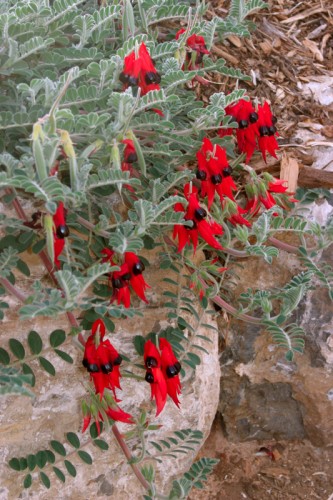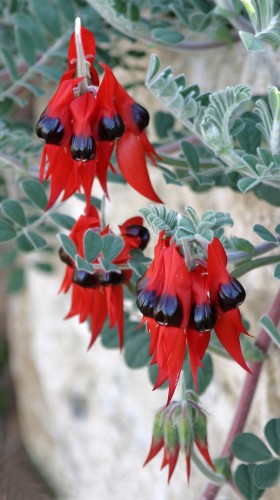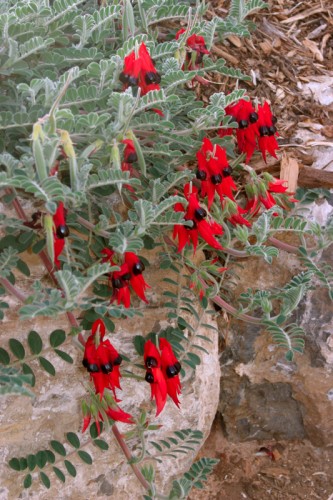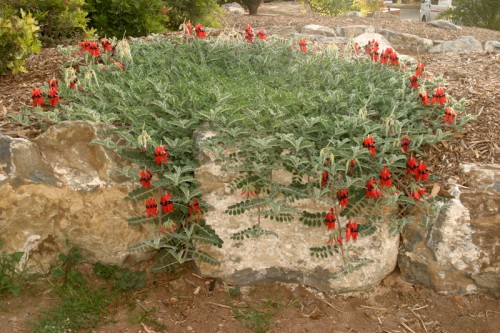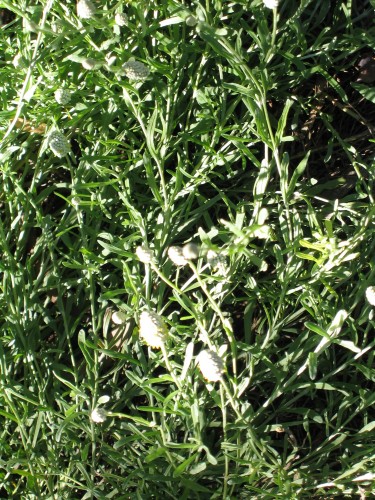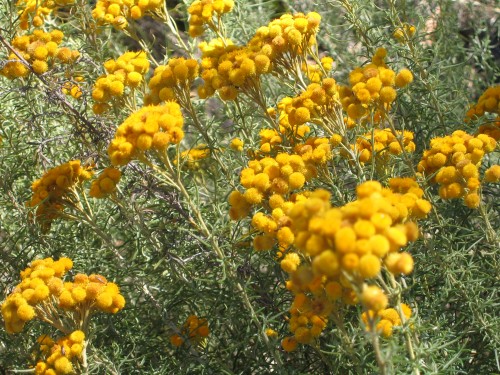What’s flowering in May?
There are quite a few plants flowering in my district in May. They include Swainsona formosa, Acacia iteaphylla, Eremophila maculata forms, to name a few. This has stimulated me to begin again on my blog, as well as the queries for information that I periodically receive. My lifestyle has changed and should allow me to pick up again.
Swainsona formosa may seem to be an unlikely plant to include in this list. However a roughly 5square metres front yard of a house in the town has been sown completely to the Sturt’s Desert Pea. The owner described to me that he threw a handful of seed over the yellow gravel he had spread over the area which may have been lawn before. He did it at this time of the year relying on natural rainfall to germinate the seed. He applied some extra water during the height of summer to keep them going. The result was a gorgeous display of red flowers with the black eye, against the grey green foliage. He showed me where more seed was germinating in some of the bare patches. He also had an abundance of seed pods filled with seed, a handful of which he generously gave to me.
Swainsona formosa (Sturt’s Desert Pea)
I was sent some lovely photos of Sturt’s Desert Pea by a reader of this blog. As you can see, the plant is dense and lush, as you would want to have it in the garden, not in a state of survival.
Sturt Peas need to be watered. They respond with excellent growth and numerous flowers. Water well pots are very good.
The only exception to this might be if you had a self sown plant. These are remarkably hardy as self sown plants seem to send the roots very deep.
They also respond to being fed. Use a fertiliser designed for native plants.
In the photos the plant is growing in a raised bed. It has been shown that so long as the planting mound is at least 10cm(4 inches) above the surrounding soil, that will give the required good drainage.
Calocephalus lacteus (Milky Beauty-heads)
Calocephalus lacteus is a small spreading plant with small, globular, whitish flower heads in late spring and summer. The photo was taken in early January in Canberra Botanic Gardens.
The plant suckers, growing 10-30 cm tall by 1-1.5 metres wide. It is hardy in most situations, prefers moist soil but withstands periods of dryness. It grows in full sun to part shade in sand loam or clay that is well drained. It would need some water during the summer in low rainfall areas.
Acacia baileyana prostrate form (Cootamundra Wattle)
The prostrate form of Acacia baileyana is a lovely form of the taller tree. Even without flowers, the dense, grey green foliage is attractive in a garden setting. It cascades over slopes and follows the contour of the ground and it is excellent for covering large areas as a ground cover as it grows 30-60 cm tall and 3-4 metres wide. It has bright yellow flowers from winter to spring. It is a very hardy plant in most situations, withstanding dry periods and growing in full sun to part shade in sand, clay or loam.
A photo of the larger form in flower can be seen here.
Chrysocephalum semipapposum (Clustered Everlasting)
This is one of my favourite plants and it is a member of the daisy family. Members of The Daisy Study Group had several forms of Chrysocephalum semipapposum growing. Chrysocephalum used to be Helichrysm.
It is a variable species with grey to green leaves which vary in width from quite fine to a coarser leaved form. It has clusters of small yellow flowers, which, if picked quite early in the flowering stage, will keep as an everlasting. If picked to late the flower will continue to open and the seeds will fluff out.
The plants grow from 50-80cm tall and make clumps up to a metre wide. Flowering is from Spring through to autumn so they are good value in the garden, especially in a cottage garden setting. The plants shoot from the bottom, so when the first signs of shooting appear, it is time to chop the clumps back to the new growth.
This plant is hardy in most situations and grows in full sun to filtered or part sun. It withstands periods of dryness but does best with extra moisture. The plant is suitable for heavy clay, loams and sand.
